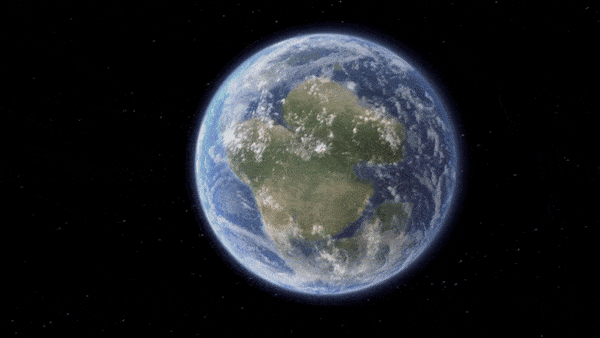When you buy through links on our website , we may take in an affiliate commission . Here ’s how it works .
Devastating volcanic eruptions may have been so tremendous they turned the planet into " Snowball Earth " 717 million old age ago , a study has found .
The volcanic outburst — one of the largest in Earth ’s history — probably triggered a series of chemic reactions that take in C dioxide ( CO2 ) from Earth ’s ancient atmosphere .

Lava rocks are particularly susceptive to a chemical reaction that sucks CO2 out of the atmosphere.
The massive eruptions , which take place in what is now northern Canada , spewed cascade of lava that hardened into a volcanic highlandcovering 860,000 straight miles(2.23 million solid kilometers ) — an area three times the sizing of Texas . acidulous rainfall then pelted these clean rocks , bring out a chemical reaction that may have envelop the satellite in ice for 57 million year .
investigator already suspected that volcanic bodily process may have caused this glaciation installment , known as the Sturtian glaciation . But they were unsure exactly how the outburst caused the onslaught of Snowball Earth .
" Nothing can be see in isolation,“Galen Pippa Halverson , a prof of geology at McGill University in Canada and Centennial State - author of the newfangled study , toldScience .

The volcanic outburst triggered a series of chemical reactions that may have coated Earth in ice.
Related : World ’s sure-enough glacier date to 2.9 billion years ago , research notice
There are two main ways that volcanic volcanic eruption can cool the planet down , according to the study published 27 June in the journalEarth and Planetary Science Letters . Outbursts release gaseous state containing S - rich particles that become suspended in the atmosphere and pulley-block sunshine , resulting in cooling . volcanic eruption may also modify the climate via a chemical reaction known as weathering , which lava rocks are particularly susceptible to .
Weathering come when rainwater — which is more or less acidic due to dissolved C dioxide ( CO2 ) — reacts with the minerals in rock to form clays and soluble salts . In take shape these new minerals , CO2 is sucked out of the atmosphere and trap in sediment that eventually wash into the sea . The remotion of CO2 , agreenhouse gas , run to world cooling .

To understand which mechanism triggered the Sturtian glaciation , the team needed to home in on precisely when the volcanic burst took blank space . Sulfur particles stay suspended in the atmosphere for months to years , whereas stone weathering takes 1 million to 2 million years to activate a orbicular cooling effect .
Halverson and her workfellow dissect midget crystals in the Rock coughed up by volcano in the expanse , which is known as the Franklin large igneous province ( LIP ) . They measure the ratios of U and lead in these crystals and calculated their age base on the rate of decay . The team also dated rocks that had been scoured by glaciers as Earth froze over .
Their psychoanalysis suggests the volcanic flare-up took place 1 million to 2 million years before the glaciation , point to chemical weathering as the primary grounds of Earth ’s cooling . Another study , published in November 2022 in the journalScience Advances , came to the same conclusion .

— sulphur from dino - down asteroid caused agency more global cooling than think
— Ash from Tonga volcano eruption contact record EL but mood cooling unlikely
— Piece of lost continent discovered beneath Canada

rock and roll weathering elsewhere on the globe may have bestow to the Franklin LIP ’s cool off effect . The eruptions and subsequent glaciation occurred at a time when Earth ’s continents formed one giant land mass around the equator — the ancient supercontinent Rodinia . This tropical landmass was frequently batter with rainfall , result in extra weathering and CO2 entrapment .
But some experts remain skeptical . Paul Hoffman , an emeritus professor of geology at Harvard University who co - authored the 2022 study , said the timing of the Sturtian glaciation is still debate and may not tally the newly pinpointed timing of the Franklin LIP . sparkler - scour rocks that represent the starting of Snowball Earth may have organise much after than currently thought , because the eroding indicates that deep ice was fall at sea level — a process likely to have begin several hundred thousand years after the oceans freeze over , Hoffman told Science .














